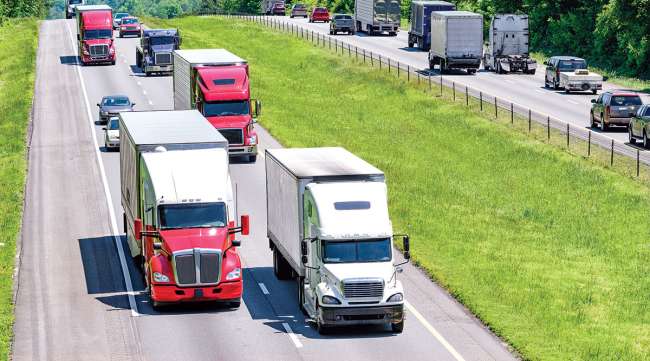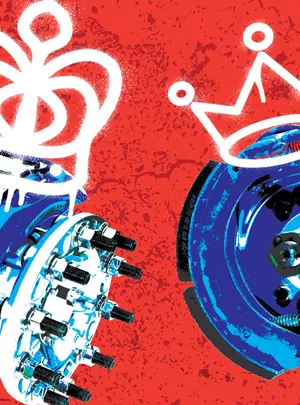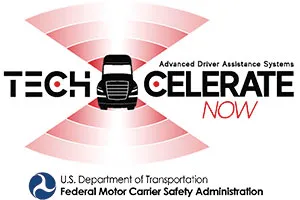Industry Groups Updating ADAS Adoption Information

[Find the latest in equipment & maintenance: Explore this quarter's issue of Calibrate]
Working closely with the Federal Motor Carrier Safety Administration, several industry groups are updating and expanding much-needed technical and outreach information regarding advanced driver assistance systems.
Under the leadership of the American Transportation Research Institute and American Trucking Associations’ Technology & Maintenance Council, ATA and the OOIDA Foundation have reconstituted their previous partnership with FMCSA to update and enhance critical information needed by industry stakeholders to stimulate adoption and deployment of ADAS. More than a dozen types of active safety systems are considered to be ADAS technologies and have been shown to improve safety and reduce crashes.
This same coalition previously developed a variety of ADAS tools and materials using the project brand name “TechCelerate Now.” The FMCSA-sponsored second phase of TechCelerate Now continues its focus on accelerating the adoption of ADAS by the trucking industry to reduce fatalities and prevent injuries and crashes.

Braswell
ADAS technologies continue to evolve, with enhanced sensing and response capabilities, new features and new parameters that allow better ADAS customization to a meet a variety of different fleet duty cycles and operational needs. There is a growing need to review and update Phase 1 TechCelerate Now resources to keep pace with these technical advancements and help fleets and drivers understand the improved performance to be expected from several generations of ADAS that likely will be present in many fleets.
More Q3 Calibrate

►Are Air Disc Brakes Worth It?
►Freeze: Let's Get Optimistic
►Hexagon Agility and Brudeli Green Mobility to Deliver NZEVs
►5 Questions With Kenneth M. Eggen
►ROTATE Recap: Know the 'What' and 'Why' of Data
►TMC Corner: Industry Groups Updating ADAS Adoption Information
Explore the Issue!
This TechCelerate Now industry partnership will develop new and updated technical information and guidelines for various ADAS technologies to further promote the goals of accelerating ADAS adoption to reduce crashes — saving lives — and realize substantial return on investment through initial safety values and long-term benefits. The earlier effort produced various video, web-based, and print informational materials, an ADAS safety guide, and an ROI calculator. All of these can be found at fmcsa.dot.gov/Tech-CelerateNow.
The coalition regenerated an important TechCelerate Now steering committee that will provide technical oversight of the new effort. Among other objectives, the Phase 2 program will survey industry stakeholders to determine the level of ADAS deployment, serve as an industry resource on available ADAS technology and provide new technical information and video content, through a national outreach center, to spur additional adoption.
Specific targets include:
- Fleet executives and fleet managers: Early investment in ADAS will reduce crashes/injuries and operator liability, increase driver productivity, reduce driver turnover and improve driver satisfaction without negatively impacting the profitability of fleet operations.
- Fleet safety directors: Proper specification, training and maintenance of ADAS will reduce crashes/injuries and operator liability and improve driver satisfaction without negatively impacting the profitability of fleet operations and maintenance.
- Owner-operators/small carriers: Early adoption and use of ADAS will reduce crashes/injuries and operator liability and improve the driving experience without negatively impacting the profitability of owner-operator/small-carrier operations.
- Company drivers: Use of ADAS will reduce crashes/injuries and operator liability and improve the driving experience for company drivers.
- OEMs, Tier 1 brake suppliers and ADAS suppliers: Standardization and consistent industry messaging will help vehicle manufacturers, major component providers and ADAS suppliers improve technology deployment, product performance and long-term acceptance of these technologies.
Under the new Phase 2 program, the partnership will analyze all existing TechCelerate Now materials in comparison with technical advancements in the systems themselves. As a result, this “gap analysis” will develop new and/or revised materials to improve understanding among all professionals and further demonstrate the benefits to all stakeholders and the public from accelerated implementation of ADAS systems.

Under the original TechCelerate Now partnership, TMC promoted several recommended practices: TMC RP 1801, Selection and Specification of Advanced Driver Assistance Systems.
This time, we will be looking at TMC RP 547, Nomenclature Guide to Advanced Driver Assistance System Technologies; and TMC RP 548, Technician Training for Advanced Driver Assistance System Technologies, to reflect an update of the council’s most recent review of available ADAS technologies. Various other existing RPs also will be reviewed.
At its annual meeting in New Orleans in March, TMC commissioned the new task forces to work with the council’s ADAS Steering Committee on the program updates, which will work over the upcoming months to begin the process of drafting proposed practices:
- Under its S.4 Cab and Controls Study Group, a task force that will explore ways in which ADAS technologies should alert commercial drivers or intervene in different situations, including types of alerts, location of alerts, colors, words, and icons used in visual alerts, sounds and timing of alerts, and ways in which the driver or fleet can change the parameters of the alerts. Among other possible avenues, these will involve revisions to TMC RP 430B, Guidelines for Collision Warning Devices.
- Under its S.12 Onboard Vehicle Electronics Study Group, the task force will develop a description of the data typically available from ADAS technologies, show how the data are available to fleets, the metrics or flags that a fleet should look for in the data, and the recommended actions that could be taken if a metric or flag signals problems.
- Under its S.18 Automated Vehicles Study Group, a task force will formulate recommendations for commercial driver training focusing on automatic emergency braking and lane departure systems.
Want more news? Listen to today's daily briefing below or go here for more info:




